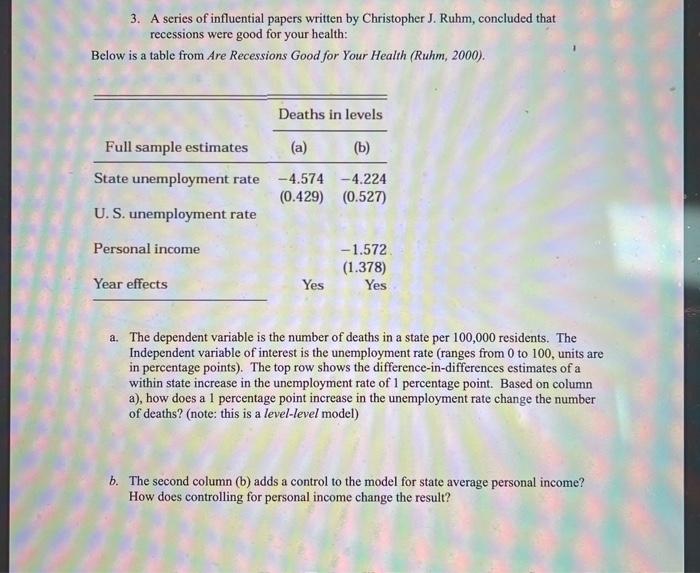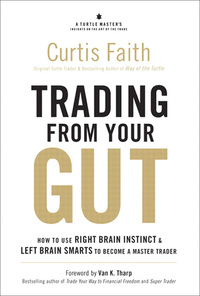3. A series of influential papers written by Christopher J. Ruhm, concluded that recessions were good for your health: Below is a table from Are Recessions Good for Your Health (Ruhm, 2000). Deaths in levels Full sample estimates (a) (b) State unemployment rate -4.574 -4.224 (0.429) (0.527) U.S. unemployment rate Personal income -1.572 (1.378) Yes Year effects Yes a. The dependent variable is the number of deaths in a state per 100,000 residents. The Independent variable of interest is the unemployment rate (ranges from 0 to 100 units are in percentage points). The top row shows the difference-in-differences estimates of a within state increase in the unemployment rate of 1 percentage point. Based on column a), how does a 1 percentage point increase in the unemployment rate change the number of deaths? (note: this is a level-level model) b. The second column (b) adds a control to the model for state average personal income? How does controlling for personal income change the result? c. There are no stars on in the table above. Is the relationship between unemployment rate and mortality statistically significant? d. Based on Ruhm's findings, explain how the great recession from its start in 2007 to its peak in 2009 would affect the number of deaths per 100,000 people. (You can look up the change in unemployment from the great recession). 3. A series of influential papers written by Christopher J. Ruhm, concluded that recessions were good for your health: Below is a table from Are Recessions Good for Your Health (Ruhm, 2000). Deaths in levels Full sample estimates (a) (b) State unemployment rate -4.574 -4.224 (0.429) (0.527) U.S. unemployment rate Personal income -1.572 (1.378) Yes Year effects Yes a. The dependent variable is the number of deaths in a state per 100,000 residents. The Independent variable of interest is the unemployment rate (ranges from 0 to 100 units are in percentage points). The top row shows the difference-in-differences estimates of a within state increase in the unemployment rate of 1 percentage point. Based on column a), how does a 1 percentage point increase in the unemployment rate change the number of deaths? (note: this is a level-level model) b. The second column (b) adds a control to the model for state average personal income? How does controlling for personal income change the result? c. There are no stars on in the table above. Is the relationship between unemployment rate and mortality statistically significant? d. Based on Ruhm's findings, explain how the great recession from its start in 2007 to its peak in 2009 would affect the number of deaths per 100,000 people. (You can look up the change in unemployment from the great recession)








